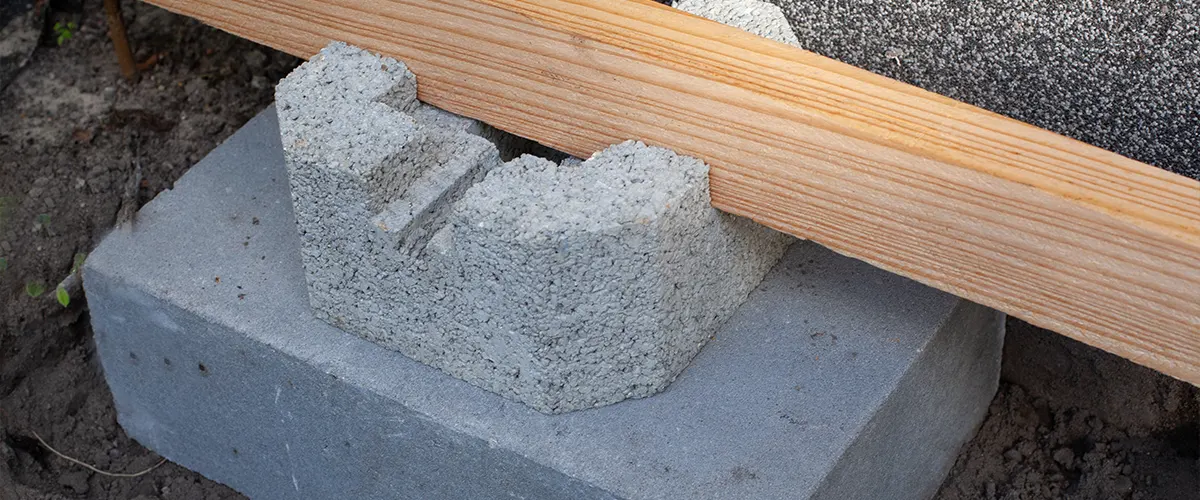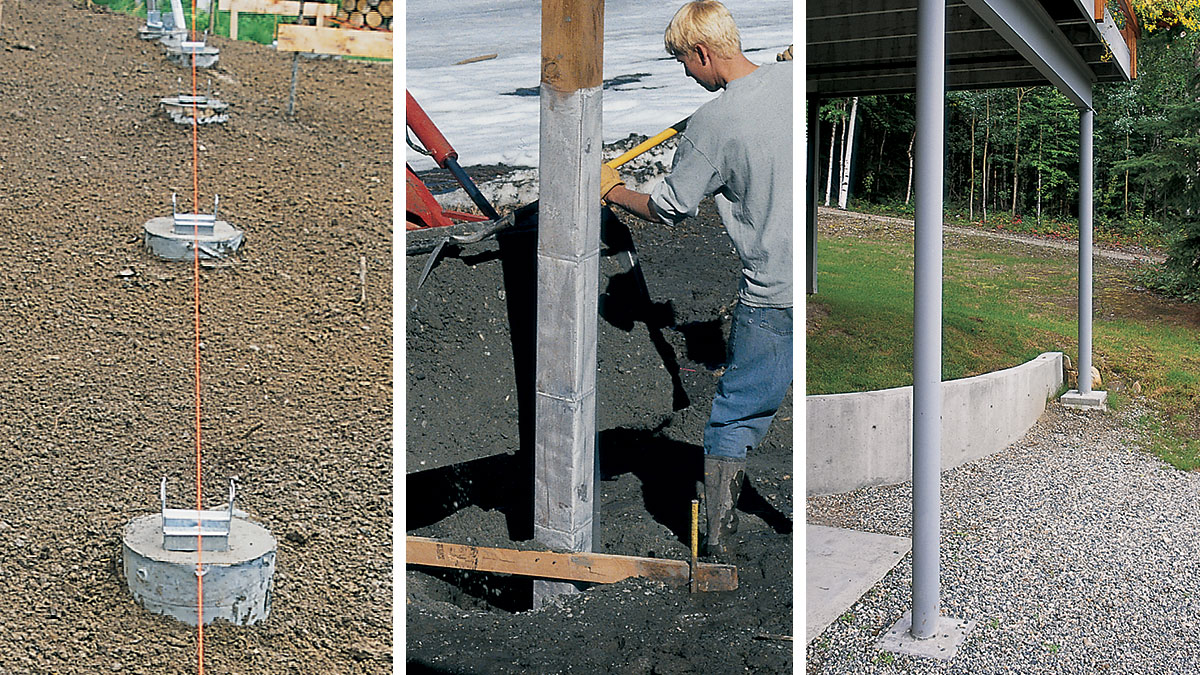Selecting the Right Deck Footings for Security and Longevity
When it concerns developing a deck, among the most essential choices you will make is choosing the right grounds for stability and resilience. The long life and safety and security of your deck depend heavily on the kind of grounds you select, as they give the necessary support and security to endure the test of time. With a myriad of choices available, it can be frustrating to establish which grounds are best suited for your details requirements. In this conversation, we will discover the various kinds of deck footings, take into consideration the crucial aspects to consider when choosing, and delve into the benefits and drawbacks of different alternatives. By the end, you will have a more clear understanding of the choices handy and be much better equipped to make a notified decision for your deck job.
Kinds Of Deck Grounds
There are several types of deck grounds that can be made use of, each offering distinct benefits and considerations. One typical kind of footing is the concrete pier ground. These grounds contain a round opening full of concrete, which supplies a strong structure for the deck blog posts. Concrete pier footings are relatively easy to install and provide exceptional security, making them a preferred selection for many deck projects.
These grounds are set up by screwing them into the ground, which develops a safe structure for the deck. They also allow for simple adjustment and leveling of the deck if needed.
Conversely, some building contractors opt for precast concrete grounds. These footings are made of sturdy concrete and be available in various forms and sizes to fit different deck designs. Precast concrete grounds are convenient to mount and offer a stable base for the deck structure.
Ultimately, one more alternative is the post-in-anchor footing system. This kind of footing entails driving a metal support right into the ground and connecting it to the deck post. It uses flexibility in terms of placing the deck messages and appropriates for decks with lightweight frameworks.
When choosing the ideal sort of deck footing, it is important to think about factors such as soil problems, deck load, and regional structure codes (Deck Footings). Consulting with an expert service provider or structural designer can aid guarantee the ideal footing is selected for a stable and secure deck
Variables to Consider When Selecting Grounds
When selecting the suitable grounds for a deck, it is important to carefully think about various elements such as dirt conditions, deck lots, and adherence to local building ordinance. These aspects play a considerable role in making certain the security and sturdiness of the deck framework.
The type of soil on which the deck will be built determines the kind of grounds needed. On the other hand, decks constructed on clay or large dirts may call for grounds that can fit the soil's propensity to broaden and contract.
An additional crucial aspect is the deck load. The weight of the deck, consisting of the products used and any kind of prospective live loads such as furnishings or gatherings, must be taken into consideration when choosing footings. The grounds must be made to birth the weight of the deck and distribute it equally to stop any architectural problems or failings.
Finally, adherence to local building regulations is critical. Structure codes differ from area to region, and it is vital to follow the certain requirements established by the local authorities. Deck Footings. These codes make certain that the deck is built securely and meets the essential criteria for architectural honesty and load-bearing ability
Concrete Grounds: Pros and Disadvantages

Concrete footings use numerous advantages and negative aspects when used as the foundation for a deck. On the favorable side, concrete grounds provide outstanding security and longevity. Concrete is a strong and rigid material that can support hefty tons and hold up against various weather condition conditions. It likewise has a lengthy life expectancy, making it a trusted choice for long-term use.
One more advantage of concrete footings is their adaptability. They can be poured into different shapes and sizes to accommodate various deck designs and configurations. Concrete footings can be customized to fit the specific needs and requirements of the deck framework.
Nevertheless, there are also some downsides to making use of concrete footings. This can boost the total cost of the deck project and might call for professional assistance.

Helical Piers Vs. Sonotubes: Which Is Much better?
In taking into consideration the structure alternatives for a deck, the comparison between helical piers and sonotubes is important in figuring out the premium choice. Helical piers, also referred to as screw piles, are steel shafts with helical plates connected to them. They are twisted into the ground utilizing hydraulic equipment, supplying a secure and sturdy structure for the deck. On the various other hand, sonotubes are round forms made of cardboard or fiber material that are loaded with original site concrete. They are put in a hole explored the ground and offer support for the deck.
When it comes to stability and durability, helical piers have the top hand. The helical plates on the piers develop a solid hold with the soil, protecting against any kind of motion or shifting of the deck. This is specifically valuable in areas with unstable or changing soil problems. Sonotubes, on the other hand, depend solely on the concrete filling up for security, which might not offer the very same level of toughness and resistance.
In terms of setup, helical piers are Get More Info relatively much easier and faster to install compared to sonotubes. The hydraulic equipment made use of to twist the piers right into the ground makes certain a quick and reliable procedure. Sonotubes, on the other hand, need excavating openings and pouring concrete, which can be labor-intensive and time-consuming.
Furthermore, helical piers are an even more flexible option. They can be made use of in various dirt conditions and can be readjusted or strengthened if needed. Sonotubes, on the various other hand, might call for additional support, such as rebar, in specific dirt problems or locations with high lots requirements.
Selecting the Right Footings for Your Deck's Dimensions
For ideal structural honesty, it is important to very carefully pick the appropriate footings that align with the dimensions of your deck. The dimensions of your deck, including its elevation, length, and width, play a substantial role in establishing the kind and dimension of footings called for.
When picking grounds for your deck, it is necessary to take into consideration the load-bearing ability of the dirt. The weight of the deck, incorporated with the weight of any kind of furnishings or individuals on it, puts in a considerable force on the footings (Deck Footings). It is vital to select footings that can adequately sustain this weight without moving or sinking over time.
The size and shape of the grounds must likewise be considered. Larger decks with better dimensions require bigger footings to provide enough security and assistance. The shape of the Discover More grounds, whether they are square or round, relies on the style and layout of the deck. In addition, the deepness at which the footings are set up should be determined based upon the frost line in your region to avoid any kind of heaving or moving due to freezing temperature levels.
Conclusion
In verdict, selecting the appropriate deck footings is crucial for making certain stability and resilience. Aspects such as the type of footings, the deck's measurements, and the pros and cons of various options ought to be taken into consideration. Concrete footings use strength and long life, but may be much more costly and taxing to install. Helical piers and sonotubes have their very own benefits and disadvantages. Eventually, picking the appropriate grounds for your deck's specific requirements is essential for a long-lasting and successful structure.
These footings consist of a round opening filled up with concrete, which gives a strong structure for the deck posts. Concrete pier grounds are reasonably simple to set up and provide excellent security, making them a prominent selection for many deck projects.
Precast concrete grounds are hassle-free to mount and supply a steady base for the deck framework.
It supplies adaptability in terms of placing the deck articles and is appropriate for decks with lightweight structures.
Concrete footings offer numerous benefits and drawbacks when utilized as the structure for a deck.